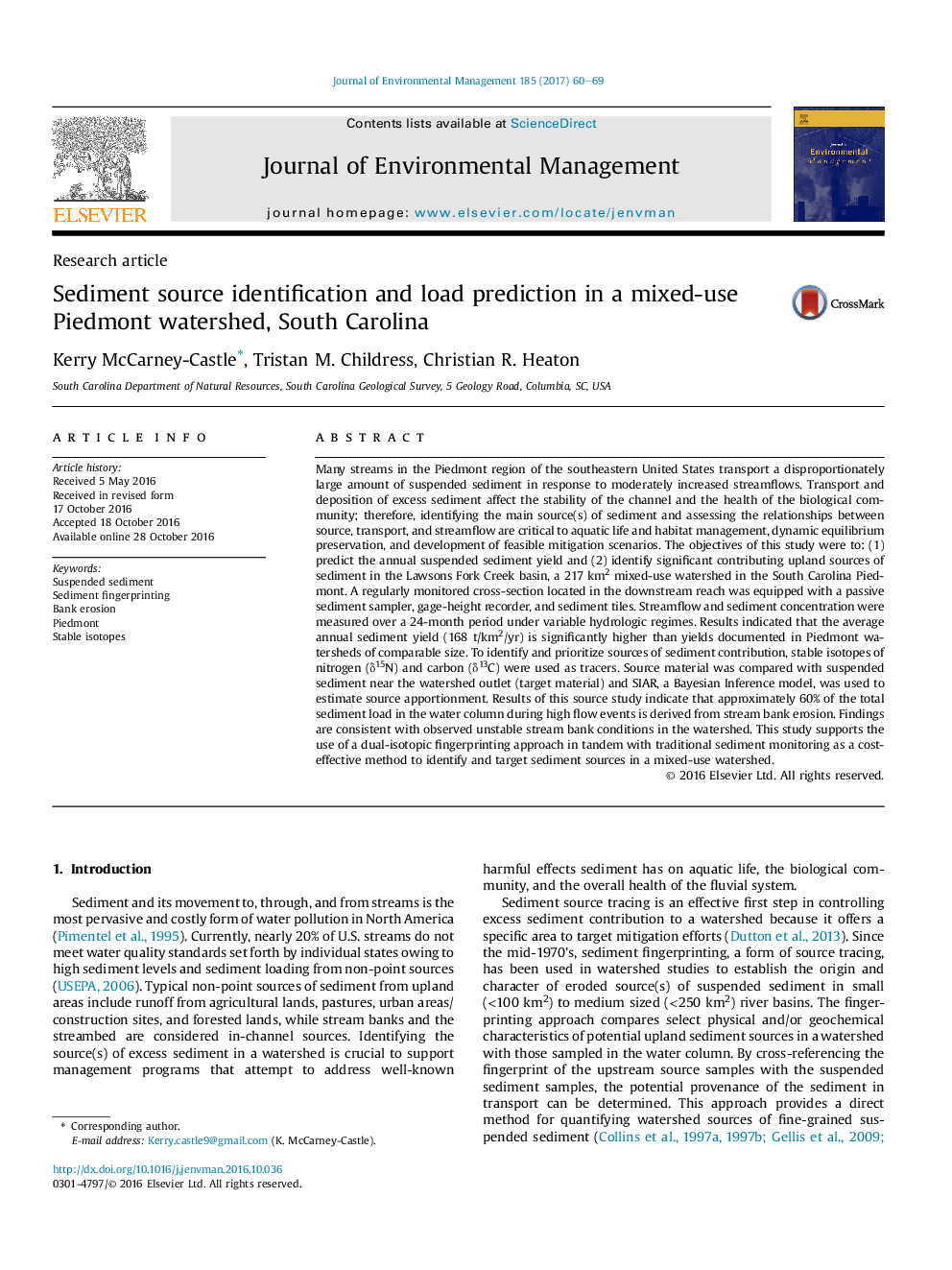| کد مقاله | کد نشریه | سال انتشار | مقاله انگلیسی | نسخه تمام متن |
|---|---|---|---|---|
| 5117341 | 1485229 | 2017 | 10 صفحه PDF | دانلود رایگان |
- High annual sediment yields were predicted for a mixed-use Piedmont watershed.
- Stables isotopes (δ15N & δ13C) were used to trace sources of upland sediment contribution.
- Approximately 60% of sediment transported during high flows is eroded bank material.
- Sediment fingerprinting could serve as a cost-effective approach to target areas for mitigation.
Many streams in the Piedmont region of the southeastern United States transport a disproportionately large amount of suspended sediment in response to moderately increased streamflows. Transport and deposition of excess sediment affect the stability of the channel and the health of the biological community; therefore, identifying the main source(s) of sediment and assessing the relationships between source, transport, and streamflow are critical to aquatic life and habitat management, dynamic equilibrium preservation, and development of feasible mitigation scenarios. The objectives of this study were to: (1) predict the annual suspended sediment yield and (2) identify significant contributing upland sources of sediment in the Lawsons Fork Creek basin, a 217 km2 mixed-use watershed in the South Carolina Piedmont. A regularly monitored cross-section located in the downstream reach was equipped with a passive sediment sampler, gage-height recorder, and sediment tiles. Streamflow and sediment concentration were measured over a 24-month period under variable hydrologic regimes. Results indicated that the average annual sediment yield (168 t/km2/yr) is significantly higher than yields documented in Piedmont watersheds of comparable size. To identify and prioritize sources of sediment contribution, stable isotopes of nitrogen (δ15N) and carbon (δ13C) were used as tracers. Source material was compared with suspended sediment near the watershed outlet (target material) and SIAR, a Bayesian Inference model, was used to estimate source apportionment. Results of this source study indicate that approximately 60% of the total sediment load in the water column during high flow events is derived from stream bank erosion. Findings are consistent with observed unstable stream bank conditions in the watershed. This study supports the use of a dual-isotopic fingerprinting approach in tandem with traditional sediment monitoring as a cost-effective method to identify and target sediment sources in a mixed-use watershed.
Journal: Journal of Environmental Management - Volume 185, 1 January 2017, Pages 60-69
